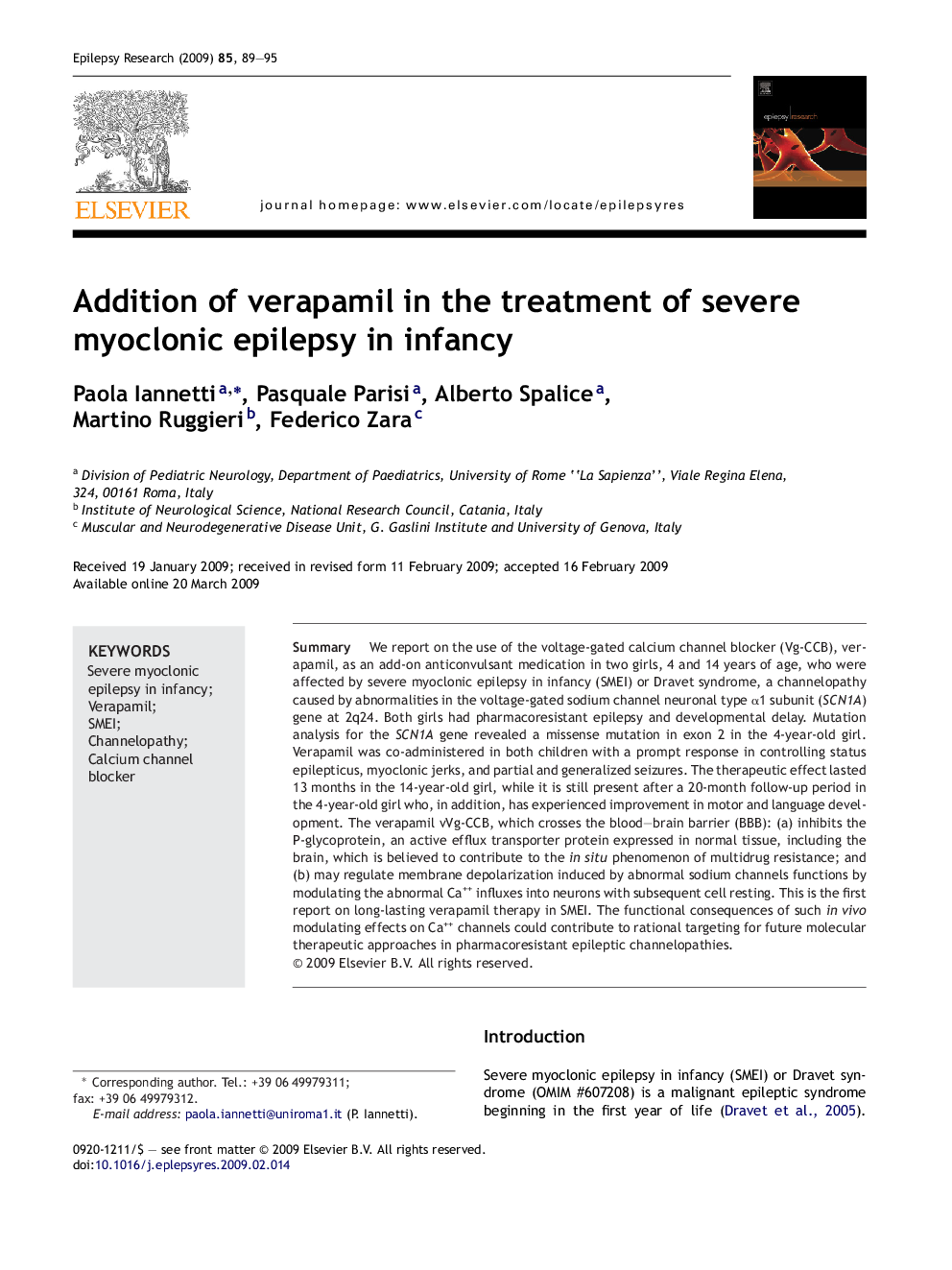| Article ID | Journal | Published Year | Pages | File Type |
|---|---|---|---|---|
| 3052798 | Epilepsy Research | 2009 | 7 Pages |
SummaryWe report on the use of the voltage-gated calcium channel blocker (Vg-CCB), verapamil, as an add-on anticonvulsant medication in two girls, 4 and 14 years of age, who were affected by severe myoclonic epilepsy in infancy (SMEI) or Dravet syndrome, a channelopathy caused by abnormalities in the voltage-gated sodium channel neuronal type α1 subunit (SCN1A) gene at 2q24. Both girls had pharmacoresistant epilepsy and developmental delay. Mutation analysis for the SCN1A gene revealed a missense mutation in exon 2 in the 4-year-old girl. Verapamil was co-administered in both children with a prompt response in controlling status epilepticus, myoclonic jerks, and partial and generalized seizures. The therapeutic effect lasted 13 months in the 14-year-old girl, while it is still present after a 20-month follow-up period in the 4-year-old girl who, in addition, has experienced improvement in motor and language development. The verapamil vVg-CCB, which crosses the blood–brain barrier (BBB): (a) inhibits the P-glycoprotein, an active efflux transporter protein expressed in normal tissue, including the brain, which is believed to contribute to the in situ phenomenon of multidrug resistance; and (b) may regulate membrane depolarization induced by abnormal sodium channels functions by modulating the abnormal Ca++ influxes into neurons with subsequent cell resting. This is the first report on long-lasting verapamil therapy in SMEI. The functional consequences of such in vivo modulating effects on Ca++ channels could contribute to rational targeting for future molecular therapeutic approaches in pharmacoresistant epileptic channelopathies.
